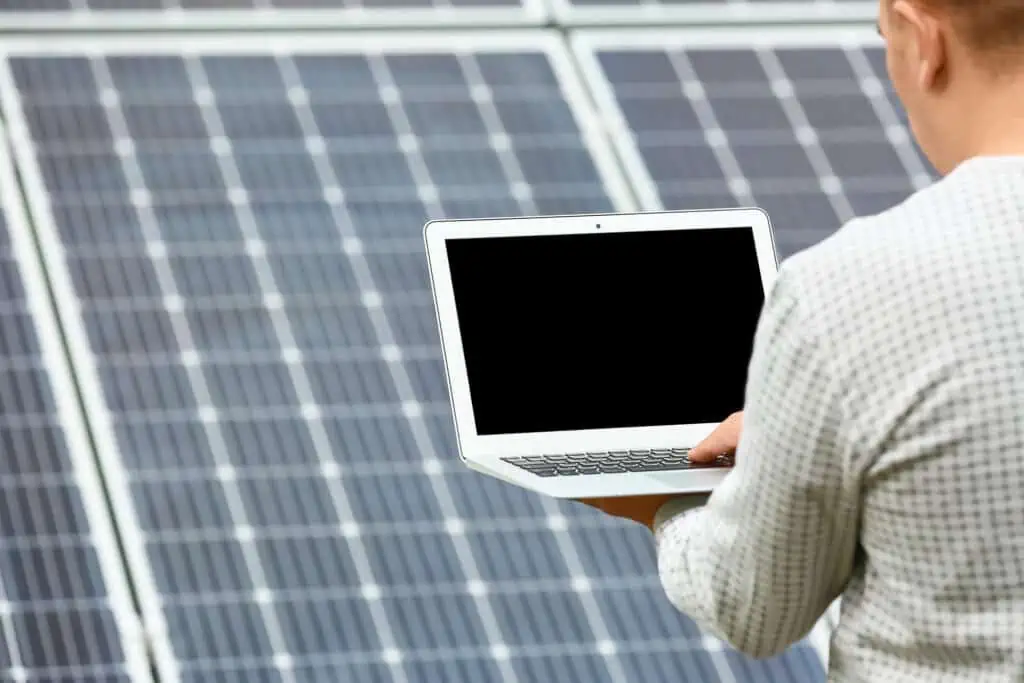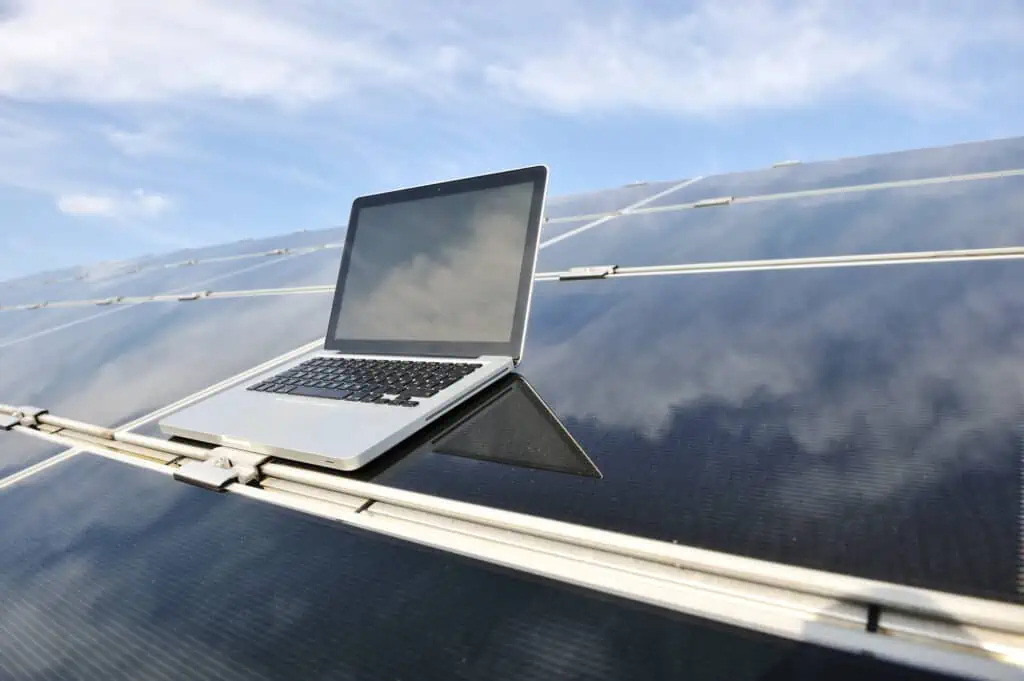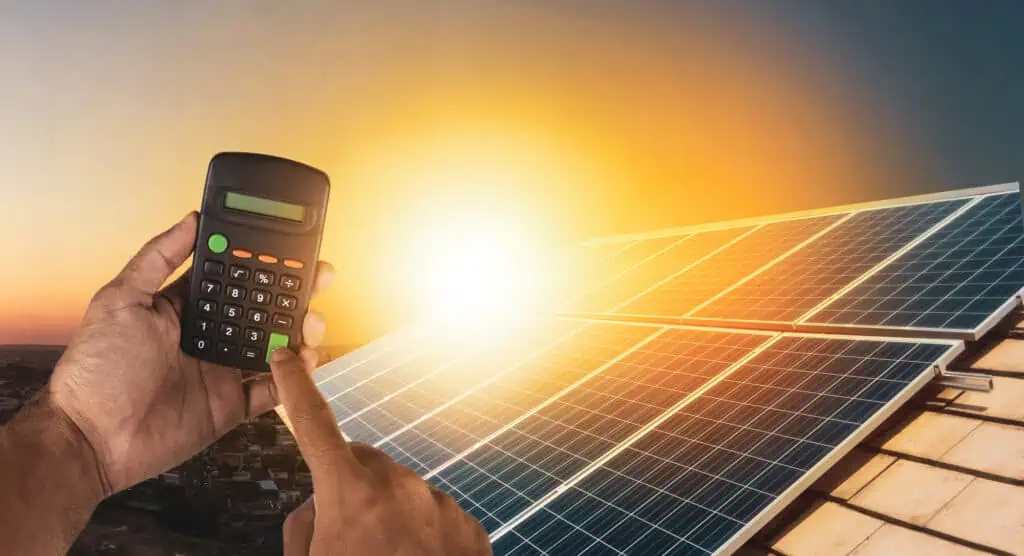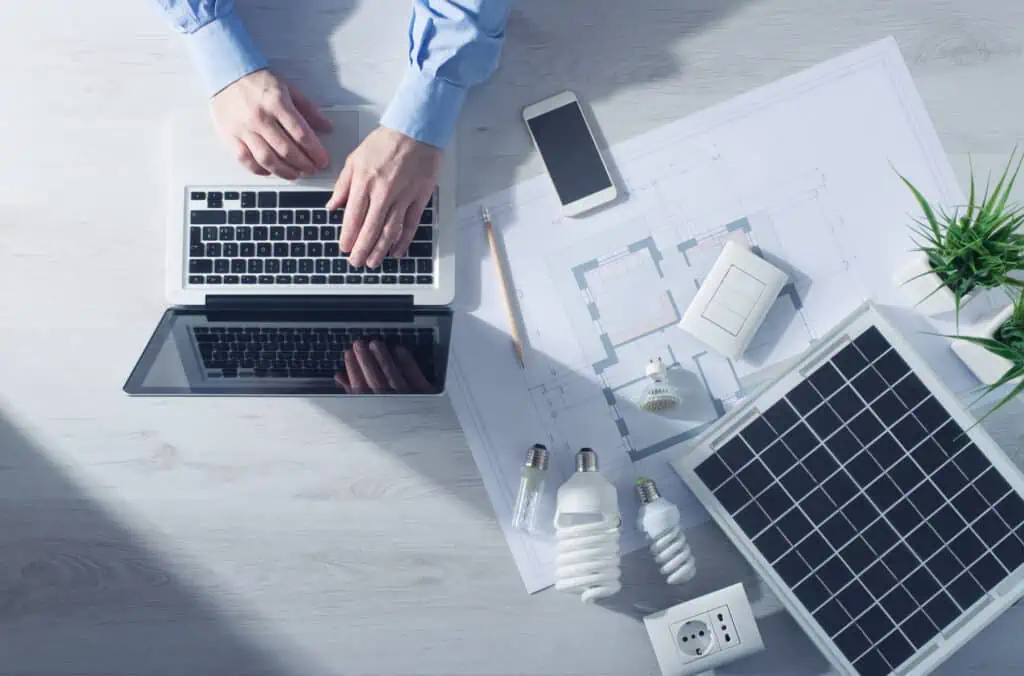Have you ever wondered if you could run your computer on solar power?
Maybe you want to reduce your carbon footprint or live in an area with frequent power outages. Whatever your reason, the idea of powering your computer with the sun is intriguing.
But is it possible? Can you really run a computer on solar power?
Let’s explore the feasibility of running a computer on solar power. We’ll also discuss what you need to know before you get started.
We’ll cover everything from the basics of solar power to the components needed to make it work. So, keep reading!
Contents
Understanding the Basics of Solar Power for Computers
As we try to reduce our carbon footprint, more people are considering running their computers on solar energy. But how does it work? Here are the basics of solar power for computers.
What is Solar Power?
Solar power is a renewable energy source that harnesses energy from the sun to produce electricity. It is a clean and eco-friendly way to generate power.
This is because it does not emit harmful greenhouse gases that contribute to climate change.
Solar power can be used in a variety of ways. This includes powering small electronic devices like calculators and flashlights. It can go as far as powering entire homes and businesses.
Overall, solar power is a promising and sustainable energy source. It has the potential to revolutionize the way we generate and consume electricity.
Understanding Solar Panels
The process of converting solar energy into electricity involves the use of solar panels. These panels are made up of photovoltaic cells.
These PV cells are made of semiconductor materials such as silicon. They are also designed to absorb sunlight and convert it into direct current (DC) electricity.
This electricity is then converted into alternating current (AC) electricity using an inverter. Then, its output can be used to power household appliances and electronics.
How Much Power Does a Computer Use?
Before delving into whether solar power can run a computer, you should understand how much power it uses.
On average, a desktop computer uses around 60–250 watts of power. A laptop uses about 15–45 watts.
Of course, the exact amount of power used will depend on different factors. These include the following:
- Computer’s components
- How often it’s used
- Whether or not it’s running power-intensive programs (i.e., games or video editing software)
To put this into perspective, let’s say you have a desktop computer that uses 100 watts of power. If you use it for 8 hours a day, that’s 800 watt-hours (Wh) of energy used per day.
Over the course of a month, that adds up to 24,000 Wh or 24 kilowatt-hours (kWh).
It’s important to keep this in mind when considering whether you can run a computer on solar power. It will help you determine how many solar panels and batteries you’ll need to meet your energy needs.
Can You Run a Computer on Solar Power?
So, can you actually run a computer on solar power?
The answer is a resounding yes! In fact, many people around the world are already running their computers on solar power. (The same goes for laptops.)
It’s a great way to save money on electricity bills and reduce your carbon footprint.
How Long Does It Take to Charge a Solar-Powered Laptop?
On average, a 20W solar panel can charge a 45 Watt-hour laptop battery in about 7 hours.
But this can vary depending on the laptop’s battery size and the amount of sunlight available. Also, if the laptop battery is larger, it may take longer to charge fully.
Are Solar-Powered Computers Safe?
One question that often arises when considering solar-powered computers is whether they are safe to use.
The answer is yes.
Solar-powered computers are safe as long as they are set up correctly. They should also be used in accordance with manufacturer instructions.
Solar vs. Traditional Power for Computers
When it comes to powering your computer, there are two main options: traditional power sources, such as electricity from the grid, or solar power.
While traditional power sources have been the norm for decades, more and more people are turning to solar power for various reasons.
Cost Savings on Electricity Bills
With traditional power, you may be paying high rates for electricity that fluctuate based on demand and supply.
But with solar power, you can generate electricity using the sun’s energy. Also, this is completely free and renewable.
Solar panels can be expensive to install initially. But they can last up to 25 years and require little maintenance.
Over time, the cost savings on electricity bills can outweigh the initial investment.
Some governments also offer financial incentives such as tax credits and rebates. This is to encourage businesses and individuals to switch to solar power.
Portability and Convenience
Traditional power sources require access to an electrical outlet, which can be a challenge if you’re on the go or in a remote location.
With solar power, all you need is access to sunlight to keep your computer running. This is especially useful for people who work or travel outdoors, such as photographers, hikers, or campers.
With a portable solar panel and a battery pack, you can keep your computer charged and ready to use even when you’re off the grid.
Reduced Carbon Footprint
Traditional power sources, like coal or natural gas, produce harmful emissions. These contribute to climate change and air pollution.
By using solar power, you can significantly reduce your carbon footprint and help protect the environment. You’ll also be able to reduce your reliance on traditional power sources.
Increased Reliability
Traditional power sources are notorious for their inconsistency and vulnerability to outages. These can result in lost work, damaged hardware, and other inconveniences.
Solar power, on the other hand, offers increased reliability. They can help ensure your computer stays up and running no matter what.
One of the main reasons solar power is more reliable is that it is not subject to the same risks as traditional power sources.
- Solar panels are not affected by power grid failures. These can be caused by anything from natural disasters to equipment malfunctions.
- Solar power systems can be designed to include battery backups. These provide a source of power even when the sun is not shining.
Another benefit of solar power is that it is more consistent than traditional power sources. Solar panels generate electricity using the energy from the sun, which is a constant and predictable energy source.
Traditional power sources can be impacted by demand fluctuations, weather, and other factors.
Minimal Maintenance Required
Unlike traditional power sources, solar panels do not have any moving parts that can wear out or break down.
This means that once the solar panels are installed, they require very little maintenance or upkeep.
Traditional power sources require regular maintenance to ensure they are functioning properly. This can include changing filters, oiling moving parts, and replacing worn-out components.
Also, traditional power sources are susceptible to power outages. This can cause downtime and lost productivity.
Calculating Your Solar Power Needs for a Computer
It seems like the perfect idea to run your computer on solar power. But before you go out and buy a solar panel, you first need to calculate how much solar power you need to generate.
Determine Your Computer’s Power Needs
Before you can calculate your solar power needs for your computer, you need to determine how much power your computer uses.
This information will help you decide on the size and quantity of solar panels. It can also help you identify which batteries and inverters are needed for your computer.
To determine your computer’s power needs, you can use a tool called a watt meter. This device measures the amount of power your computer uses while it’s running.
You can also check the specifications of your computer’s power supply unit (PSU). This should list the maximum power output in watts.
After determining your computer’s power needs, use this information to calculate how much solar power you need to run it.
Calculate the Total Wattage Required
To do this, you’ll need to determine the power requirements of each component connected to your computer.
- CPU: To calculate the wattage required for your CPU, you can refer to the manufacturer’s specifications. You can also use an online power supply calculator.
- Monitor: For the monitor, check the back of the device for the wattage rating. You can also consult the manufacturer’s specifications.
- Keyboards, mice, and other peripherals. These typically require very little power and can be ignored for the purposes of this calculation.
Once you have determined the wattage requirements for each component, add them together. Then, you’ll get the total wattage required for your solar-powered computer.
Remember that this number represents the maximum amount of power your system will require. So, it’s a good idea to add a margin of safety. Choose a solar panel and battery that can handle a slightly higher wattage.
Calculate the Number of Panels Required
Once you have determined the total wattage, you need to convert this to kilowatt-hours (kWh). You can do this by multiplying it by the number of hours your computer is in use each day.
For example, if your computer consumes 500 watts and is in use for 6 hours per day, the total energy consumption would be 3 kWh per day.
Next, you need to determine the output of each solar panel. This is measured in watts and can be found on the panel’s specification sheet.
To calculate the number of panels required, divide your daily power consumption by the solar panel’s output.
For example, if your solar panel has an output of 250 watts and your daily energy consumption is 3 kWh, you would need 12 panels to meet your energy needs.
Consider Battery Backup
While solar panels can provide a consistent source of power during the day, they may not be able to provide power during cloudy or rainy days. This is where a battery backup system comes in handy.
A battery backup system stores excess solar energy generated during the day and releases it when needed. This ensures your computer can continue to run even when the sun isn’t shining.
When calculating your solar power needs, you should factor in the size and capacity of the battery backup system you will need.
There are a variety of battery backup systems available on the market. These range from small portable units to large stationary units.
Consider the amount of power your computer requires and how long you need it to run during a power outage. This will help you determine the size and capacity of the battery backup system you need.
A battery backup system can also help regulate the voltage and frequency of the power supplied to your computer. This can help protect your computer from power surges and other electrical issues that can damage your equipment.
Consider the Inverter and Charge Controller
Solar panels are important when calculating your computer’s solar power needs. But that’s not all you should consider. Don’t forget the inverter and charge controller!
These components are essential for converting the DC power from the solar panels into AC power that your computer can use. They’re also vital for regulating the charge going into your battery bank.
The inverter is responsible for converting the DC power from the solar panels into AC power that your computer can use.
You’ll need to choose an inverter that can handle your computer’s wattage and any other devices you plan to power with your solar system.
The charge controller is responsible for regulating the charge going into your battery bank. It prevents overcharging, which can damage your solar batteries. It also regulates the charge based on the state of your batteries.
You’ll need to choose a charge controller that is compatible with the type of batteries you have and the wattage of your solar panels.
When selecting an inverter and charge controller, consider your system’s overall efficiency.
A more efficient system will waste less power and require fewer solar panels to meet your power needs.
You may also want to consider a hybrid inverter. It can switch between solar power and grid power as needed. And it will ensure your computer always has power, even on cloudy days.
Running Your Computer on Solar Power
Running a computer on solar power is not only possible, but it’s also an eco-friendly and cost-effective option.
With the right equipment and a little bit of know-how, you can enjoy the convenience of technology. And the best part? This can be done without harming the environment or incurring high monthly electricity costs!
So, go ahead. Embrace the sun’s power and start running your computer on solar power today!
Check out other solar power-related blogs from Solar Comparison. These will give you a clearer understanding of what you’re getting into when you switch to solar energy. If you have any questions, contact us so we can discuss them right away!




